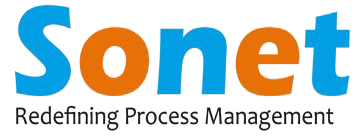SODEL Automation

Case Study: Enhancing Safety and Academic Efficiency at Jayoti Vidyapeeth Women’s University
Overview
Jayoti Vidyapeeth Women’s University, established under Act 17 of 2008, is located in a rural setting in Jaipur. The university was founded with a mission to make higher education accessible and inclusive for women, particularly in unconventional fields, thereby contributing to breaking traditional norms and empowering women through education.
Challenges Faced
Despite its noble mission, the university faced several significant challenges that needed to be addressed to ensure a safe and effective learning environment:
- Women’s Safety:
Ensuring the safety of students was a paramount concern, given the university’s location and its exclusive focus on women’s education.
- Academic Excellence:
Managing the scheduling of lectures and ensuring student attendance were critical for maintaining academic standards and improving learning outcomes.
- Examination Management:
The process of student exam enrollment, marks entry, marks verification, tabulation generation, marksheet generation and degree printing was manual and inefficient, leading to delays and potential errors.
- Student Admission Management:
The admission process was cumbersome, requiring better management to handle the volume of applications efficiently and transparently.
Solution Provided
To address these challenges, a comprehensive digital solution was implemented, focusing on safety, academic planning, examination management, and admission processes:
- Safety and Workflow Management:
- Student Gate Pass System:
A digital gate pass system was introduced, allowing for the generation of gate passes through an automated workflow management system. This ensured that only authorized students could leave or enter the campus, significantly enhancing their safety.
- Streamlined Admission Process:
- Online/Offline Admission Integration:
The university’s admission process was digitized and linked with its website, allowing students to apply online or offline. This integration streamlined the admission process, reducing the time and effort required to process applications and ensuring transparency.
- Academic Planning and Attendance Management:
- Automated Academic Planning:
The system enabled academic planning to be conducted digitally, allowing for the efficient scheduling of lectures. Additionally, attendance could be taken through the system, ensuring that students were present for scheduled lectures, thereby improving academic outcomes.
- Digitized Examination Management:
- Transparent Student Enrollment:
The examination management process was digitized, bringing transparency to student enrollment. Students could enroll for exams either online or offline through a mobile application, ensuring a smooth and error-free process.
- Marksheet and Degree Printing:
The system facilitated the automatic generation and printing of marksheets and degrees, reducing manual errors and speeding up the process.
Implementation Process
- Initial Assessment:
The university’s specific needs and challenges were thoroughly assessed to develop a tailored solution that addressed each issue effectively.
- System Development and Customization:
Customized digital tools were developed, focusing on the unique requirements of a women’s university in a rural setting. These included the gate pass system, online admission portal, academic planning tools, and examination management system.
- Deployment and Training:
The solution was deployed across the university in a phased manner to minimize disruptions. Training sessions were conducted for staff and faculty to ensure they could effectively utilize the new systems.
- Ongoing Support:
Continuous support was provided to address any issues that arose post-deployment and to optimize the system for future needs.
Benefits Realized
- Enhanced Student Safety:
The digital gate pass system provided a robust mechanism for monitoring and controlling campus access, significantly improving student safety.
- Efficient Admission Process:
The integration of online and offline admission processes reduced administrative burden, ensured transparency, and made the process more accessible to prospective students.
- Improved Academic Management:
Automated academic planning and attendance tracking ensured that lectures were effectively scheduled and that students attended, leading to better academic performance.
- Transparent and Efficient Examination Process:
The digitization of the examination process ensured transparency in student enrollment and streamlined the generation of marksheets and degrees, reducing errors and delays.
Key Outcomes
- Operational Efficiency:
The digital solutions implemented at Jayoti Vidyapeeth Women’s University significantly reduced the administrative workload, allowing staff to focus on enhancing the educational experience.
- Safety and Security:
The university was able to offer a safer environment for its students, a critical factor in a women-only institution.
- Scalability for Future Expansion:
The implemented systems are scalable, allowing the university to manage increased student numbers and new programs without compromising on quality or efficiency.
Conclusion
The automation solutions provided at Jayoti Vidyapeeth Women’s University have transformed its operational efficiency, safety measures, and academic management. By addressing the unique challenges of a rural, women-only institution, the university has set a new standard for higher education in similar settings. These advancements not only support the university’s mission of empowering women through education but also ensure that the institution is well-equipped to grow and adapt in the future.



